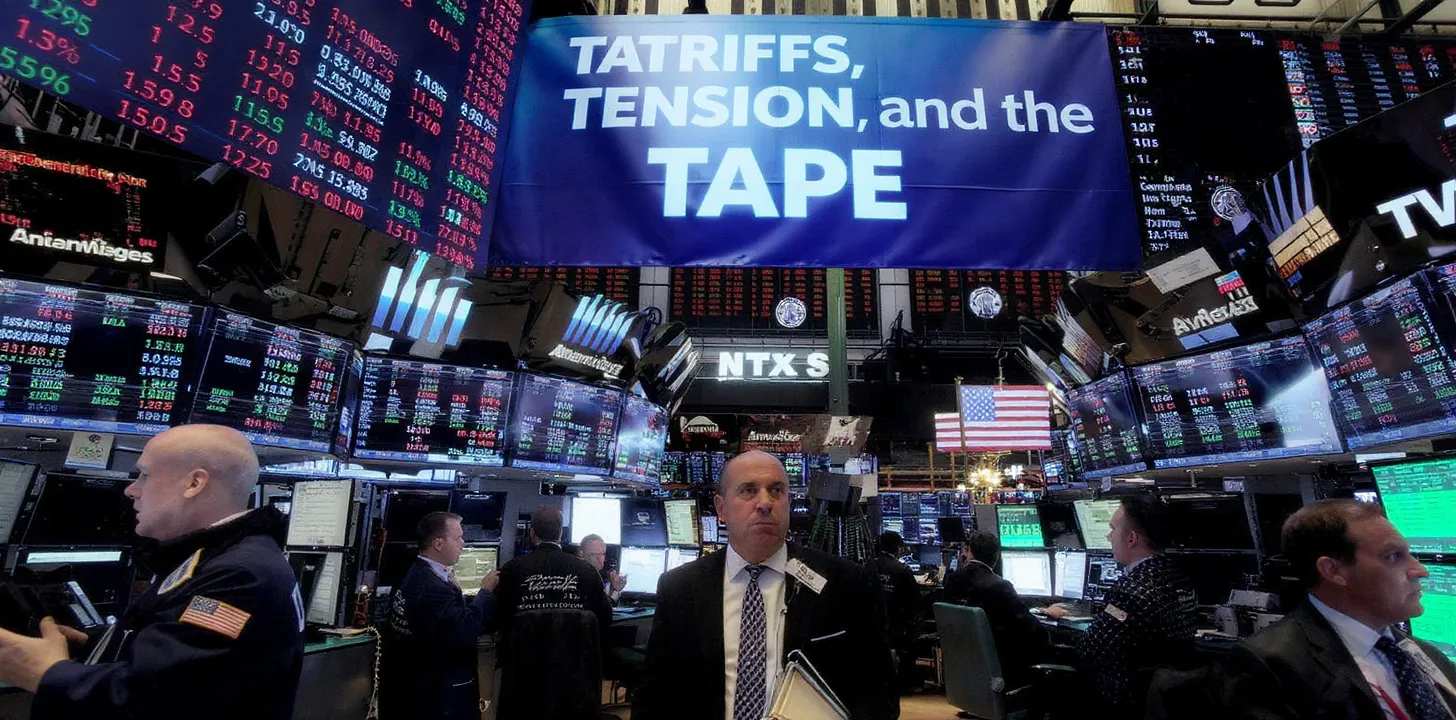Global Markets Tremble as Tariff War Escalates
Rising Tensions and Mounting Tariff Threats
Global financial markets have entered a turbulent phase driven by escalating tariff threats, predominantly initiated by U.S. President Donald Trump. The U.S. dollar strengthened notably as investors flocked to perceived safe-haven assets amid rising geopolitical and economic uncertainties. Trump announced an additional 50% tariff on Chinese goods, effective April 9th, contingent upon China’s withdrawal of its recently implemented 34% tariff. In response, China vehemently described the U.S. action as “blackmail” and pledged to resist firmly, exacerbating fears of a prolonged trade conflict.
European and Asian Markets React Sharply
The European Union, while initially favoring negotiations, proposed countermeasures, including a 25% tariff on U.S. imports slated for May 16th. Despite emphasizing readiness for dialogue and “zero for zero” tariff agreements, EU officials highlighted the preparedness to enact these measures should U.S. tariffs persist. European stocks swung heavily on these announcements, reflecting market anxiety about potential reciprocal trade barriers.
Asian markets also endured significant volatility. Japan’s Nikkei plunged 7.8% following the tariff threats but rebounded sharply by 5.5% the following day, driven by speculation of potential trade negotiations and supportive domestic policy measures. China’s stock market, initially battered by heavy selling, found some stabilization after state-owned enterprises vowed to boost stock purchases, although concerns persist regarding a potential yuan devaluation if the situation worsens.
Economic Outlook Darkens Amid Recession Fears
Economists and financial leaders worldwide expressed concerns over the potential for an accelerated global recession. BlackRock CEO Larry Fink warned that markets could experience an additional 20% decline, signaling that recessionary pressures are intensifying. Similarly, former Bank of Canada governor Mark Carney emphasized the significantly increased probability of a U.S. recession, which could substantially affect economies closely tied to American markets, including Canada.
The heightened risk environment prompted central banks to reassess their monetary policies. Federal Reserve Governor Adriana Kugler highlighted that the Fed’s primary responsibility remains managing inflation, stressing the need to monitor tariff-induced price hikes and supply shortages carefully. This stance has reinforced market expectations of potential Fed rate cuts to support growth, despite Chairman Jerome Powell’s recent hawkish signals on inflation.
Currency Markets Reflect Heightened Volatility
Currency markets exhibited pronounced volatility amidst the unfolding trade tensions. EUR/USD oscillated between gains and losses, settling around 1.0900 after briefly surging to 1.1050. Analysts caution that continued uncertainty may push EUR/USD below its critical support level at 1.0800 if divergence between ECB and Fed policies widens.
USD/JPY rose substantially, driven by increased Treasury yields. The pair briefly surpassed technical resistance at 147.88, although it faced selling pressure around the March lows of 148.18. Analysts expect further volatility, with the potential for gains toward the upper boundary of the recent trading range (144.55–150.49).
Sterling faced significant downward pressure, driven by intensifying UK-specific growth concerns and global risk aversion. GBP/USD fell below the critical 200-day moving average at 1.2812, a bearish indicator signaling further downside risk. AUD/USD similarly experienced substantial swings, remaining under persistent bearish sentiment due to Australia’s economic vulnerability to global trade dynamics.
Commodities and Bonds Reflect Market Uncertainty
Commodity prices notably declined, reflecting investor anxiety over deteriorating global economic conditions. Oil prices slumped 2%, reaching a four-year low due to heightened recession fears. Gold prices fell sharply by 2.4%, driven by a stronger dollar and rising yields, while copper dropped 3.3% to a three-month low, highlighting broader industrial concerns.
In bond markets, U.S. Treasury yields surged, reflecting rising inflation expectations and increased market volatility. The yield curve steepened notably, with the 2–10 year spread widening, indicating intensified uncertainty about the economic outlook.
Conclusion: Market Vigilance Necessary
As global financial markets continue to react sensitively to tariff developments, investors remain highly vigilant. The heightened volatility underscores the importance of clarity in trade negotiations and monetary policy adjustments. With economic forecasts increasingly precarious, market participants await definitive actions from political leaders and central banks to guide their investment strategies through this turbulent period.



